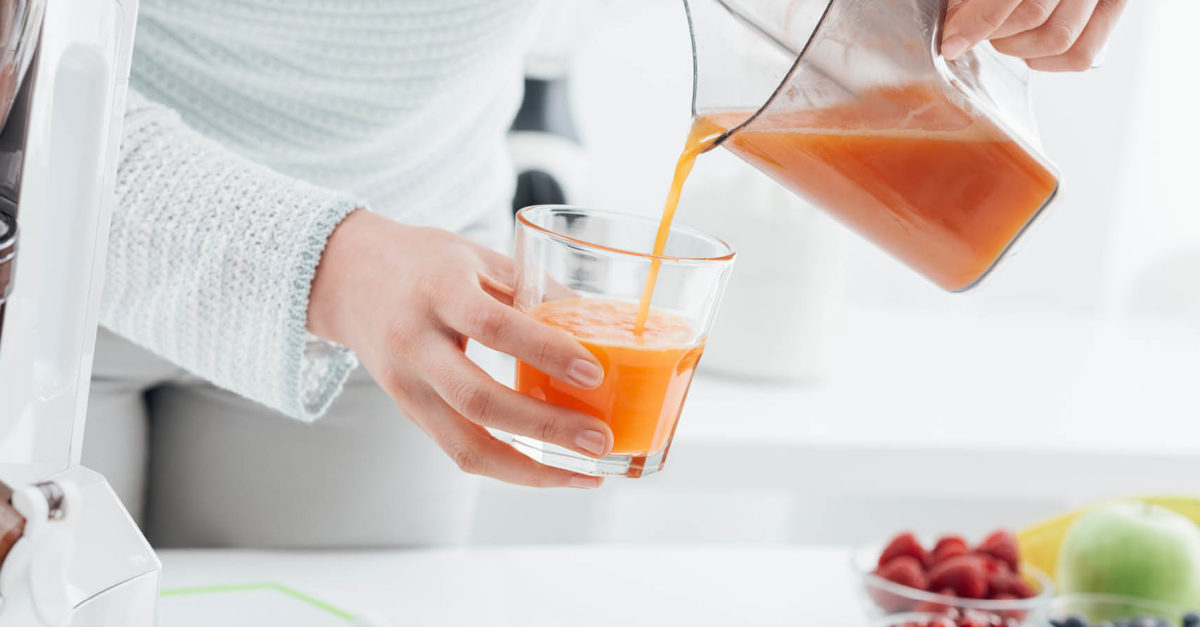A Beginner’s Guide to Juicing
If you browse through the juice aisle at the grocery store, you’ll probably notice an important similarity on the nutrition labels: most commercial juices are full of sugar. And while sugar is naturally occurring in many of the foods we eat, it’s the added sugar in many store-bought juices that’s cause for concern. Luckily, making your own juice at home can be a great alternative—and can help fortify your diet with vitamins and minerals you might not be getting from whole foods alone.
Many people find it hard to achieve the daily recommendation of fruits and veggies. It’s suggested that both male and female adults consume between one-and-a-half and two cups of fruit each day, and two-and-a-half and three cups of vegetables. If these numbers sound daunting, supplementing a healthy diet with fresh fruit and vegetable juice might be a way for you to meet the mark. This is not to say that juice can be a meal replacement. Much of the debate around juicing stems from its misrepresentation by some in the health world as a cure-all cleanse. It’s important to understand the benefits that juicing can provide and how you can maximize them for your own personal goals.
What to Buy
As folks who are already familiar with making healthy drinks at home know, there is a key difference to note between smoothies and juices. Smoothies can easily be prepared in a blender, whereas you should never try and pack your juice ingredients into a blender and expect the same results. Juicers are designed to extract the juice from foods while removing the bulk of the fiber instead of blending or pureeing like a blender.
Although you’ll need to invest in another kitchen tool before you start juicing, you should also know you have options. There are two main types of electric juicers that beginners should consider: centrifugal and masticating. Centrifugal juicers tend to be cheaper and less complicated than masticating varieties, and they produce juice more quickly. However, the extraction process generates heat, which can degrade the quality and shelf life of the juice. Masticating juicers are generally larger and more difficult to set up, but they are much quieter and produce a higher-quality juice than centrifugal juicers.
It’s best to keep in mind the ease with which you can clean your juicer (because you should be cleaning it after each use), how simple it is to assemble and disassemble, and its cost-effectiveness. A heavy-duty juicer might work a little better, but if you’re only planning on juicing a few times a month, it might not be worth the investment.

BEST BUDGET JUICER: CENTRIFUGAL JUICER
Most models run about $50, and they are great for making juice in a hurry.
BEST FOR DAILY JUICING: MASTICATING JUICER
If you’re planning to juice leafy greens and want high-quality juice, this is your pick.
BEST MULTIPURPOSE JUICER: TRITURATING JUICER
Similar in function to masticating juicers, but with two gears. Many triturating juicers can also make items like homemade nut butters and pasta noodles.
JUICE COMBINATIONS:
If the thought of adding greens to your juice sounds unappetizing, there are plenty of other popular juices to try, including:
CARROT + ORANGE
BEET + CARROT + APPLE
WATERMELON + CUCUMBER
LEMON + GINGER + MINT
The possibilities are virtually endless!
What to Juice
For a juice with a variety of health benefits and a tasty flavor profile, you’ll want to make sure to include a mixture of fruits, vegetables, greens, herbs, and spices. Popular fruits include apples, berries, pineapples, and citrus, such as lemons, oranges, and limes. For vegetables, sweet carrots and beets make a nice juice base, and foods like celery and cucumbers yield some of the highest juice content. Greens such as kale and spinach, as well as herbs like parsley and basil, can add flavor and extra antioxidants. Lastly, ginger, turmeric, cayenne, cinnamon, and other spices can be mixed into juices to bring a world of digestive benefits.
You can experiment with a combination of the aforementioned foods or find your own favorites. Depending on what you’re looking for in terms of health benefits, you might consider playing around with different juices until you find the one you like.
Although there is plenty of room for experimentation when it comes to juicing, the order you juice certain foods can be key. Begin with softer fruits and vegetables such as berries and melons, followed by harder items like apples and beets. For greens, roll them tightly and compactly to extract the most amount of juice, and place them in between the rest of the ingredients.
Filling in the Gaps
One of the best health benefits of juicing is that it’s easy for your body to absorb nutrients from the juice and it can be easier to digest than fiber-heavy whole fruits and vegetables. Although the majority of fiber is lost during juicing, nutrients and important vitamins remain mostly intact—making juicing a great option for people who have trouble getting adequate nutrients from whole foods alone.
Before you start juicing, think about the areas of your diet that may be lacking and how different types of juice can help you fill in those gaps. For example, if you feel like you aren’t getting enough vitamin C, try incorporating citrus fruits as well as green vegetables like peppers and broccoli. Dark, leafy greens are an excellent source of vitamin K, vitamin A, and magnesium. If you feel like your skin is looking dull, antioxidant-rich berries can help replenish its radiant appearance.
Whether you’re aiming to add more fruits and vegetables to your diet or are simply looking for an alternative to sugar-heavy juices at the grocery store, making fresh juices at home could be your solution. Homemade juices can be packed with vitamins and minerals that are essential to proper nutrition, and it’s a fun way to experiment in the kitchen and find new and exciting ways to reinvigorate your body and mind.









